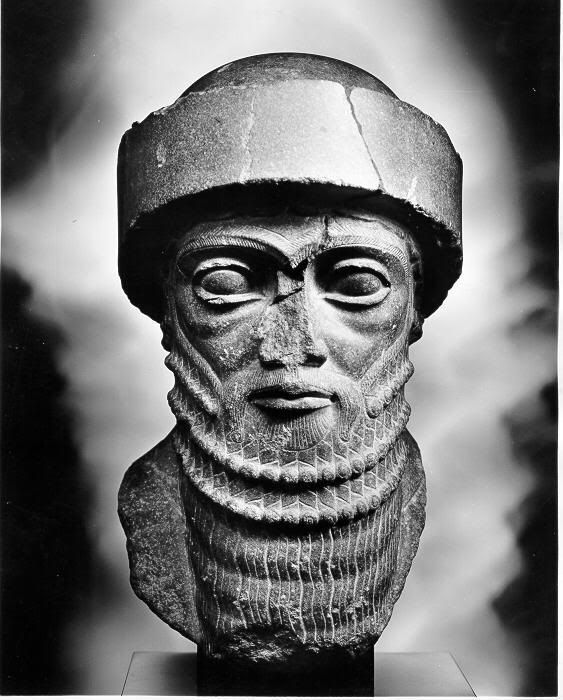There's a little bit about architecture in the last paragraph, but I thought I'd take a moment to talk a little about music, specifically a show I went to this weekend.
Summerstage is a concert series in Central Park that is mostly free and showcases a wide variety of talent, ranging from straight-jazz musicians getting a little long in the tooth to the hippest of the hip in the indie rock world. This summer is their 20th anniversary season, and their show this Saturday featured the remnants of Sun Ra's
Arkestra, which also played the first summerstage two decades ago.
There was a more intriguing reunion (and even more history) on the stage Saturday afternoon than just the anniversary of the concert series, however, because the Arkestra was sharing the stage with the three surviving members of the The Motor City Five (aka, the MC5), who were the Arkestra's opening act for a legendary series of shows in 1968.
Back then, both of these bands were making some serious noise. The MC5 were playing a feral brand of garage rock that (along with fellow Michiganders Iggy and the Stooges) was setting the scene for the punk rock explosion in the '70's. Sun Ra's Arkestra, on the other hand, was playing a spacey and entirely unique brand of jazz that anticipated Coleman's free jazz, the back to africa spirit of many of the artists on
Impulse's "New Wave", and the science fiction zionism of a lot of african american popular music starting with Parliament Funkadelic and leading right up to the Wu Tang Clan and Outkast.
But that's not the only kind of noise they were making. The MC5 were the house band of John Sinclair's radical
White Panther Party and were constantly in trouble with the law for their politics and obscenity. While Sun Ra was less overtly political, it's easy to see how his messages of building a better society in space were born out of the feelings of frustration and disenfranchisement that many blacks were feeling in America, and in light of the race riots that were occurring across the country at the time, their message of cosmic empowerment must've seemed quite dangerous to the establishment.
While 40 years have passed, one could be forgiven for feeling as if the concert were in a time warp. For one thing, many of the crowd looked like they were probably at one of the first shows in 1968, perhaps even wearing the same clothes. And they may have been chanting the same slogans as well. The fact that now, as in the 60's, the US is fighting an
unpopular war without much plan for extricating ourselves. I'm the first to admit that the differences between Vietnam and Iraq are far more numerous than the similarities, but it was more than just the tie-dye providing a sense of deja-vu.
Still, a lot has changed in the past 4 decades, even in the bands themselves. Rob Tyner and Fred "Sonic" Smith (husband of rocker/artist/poet Patti Smith) have both passed away in past decade or so, reducing the MC5 to the MC3 ( officially "DKT", reflecting the last initials of the three surviving band members.) The Arkestra's decimation is an even sadder story. Sun Ra famously had his entire band live with him in a house in Philadelphia, where they would practice for 24-hour stretches and at all times of the night on Ra's idiosyncratic compositions. But with the passing of Sun Ra the fortunes of the band have waned. Marshall Allen (with the band since 1958) still lives with some of the aging band members in the house, but it seems like only a matter of time before the band disappears (detailed in a nice piece in the NYTimes on June 30th).
Still, neither the changing politcal climate nor the ravages of time seemed to significantly diminish either band on Saturday, and the results were more than satisfying. The Arkestra performed a crowd-pleasing set of intergalactic big band tunes, and the MC5 practically howled through their set, with Wayne Kramer of the MC5 shairing vox with Lisa Kekaula of the Basement Jaxx, Handsome
Dick Manitoba of early punk band The Dictators and especially Mark Arm of Mudhoney (the second best Seattle band of the 90's). The show ended with the Arkestra joining the MC5 for a communal freak-out that was just spectacular. The jams were definitely kicked out.
And speaking of kindred spirits, check out this
old Spanish guy and former trappist monk who's decided to build an entire cathedral on his own. And not just in a comfy chair on the computer like the way I'm making my city, this guy is using tires as forms for casting concrete window elements and using all kinds of recycled materials to actually make this thing happen. The rest of the site also seems pretty interesting as well.




















